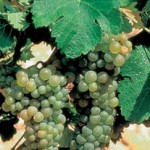Achieving balance in Viognier

Viognier is the flagship white grape variety of the Northern Rhone. While Cote-Rotie may blend up to 20% of viognier in their red wines, viognier reaches its ultimate expression in Condrieu where it must make up 100% of the wine. Viognier is also made into a sweet wine in the small appellation and monopole of Chateau Grillet. Viognier is one of the great “aromatic” whites with intense floral aromas and characteristic apricot flavors. It is a grape with naturally high sugars which means higher alcohol wines of 14% or so and low- to moderate acidity.
I was taught as a musette that quality in wine is judged by the balance of its components such as fruit, alcohol, acidity. Being brought up on warm climate wines that are naturally high in alcohol due to the climate, I knew there were many techniques to achieve higher acidity such as picking the grapes earlier or lowering alcohol to balance the wine. So what do vignerons in the Northern Rhone do to balance their Condrieu? They do not acidify the wines. Some of the highest quality winemakers ferment and age their best viognier in new french oak and perform 100% malolactic fermentation, both of which add further richness and body to an already full-bodied wine. Philippe Guigal said that it was about balancing the alcohol with “fatness” or fleshiness of fruit while Yves Cuilleron said that it is a balance of alcohol and “terroir”. After tasting exquisite Condrieu from Guigal, Cuilleron and Ch. St. Cosme, it was clear that acidity itself doesn’t define balance. Alcohol can be balanced by dense, concentrated fruit and extract from very old, low-yield vines.
